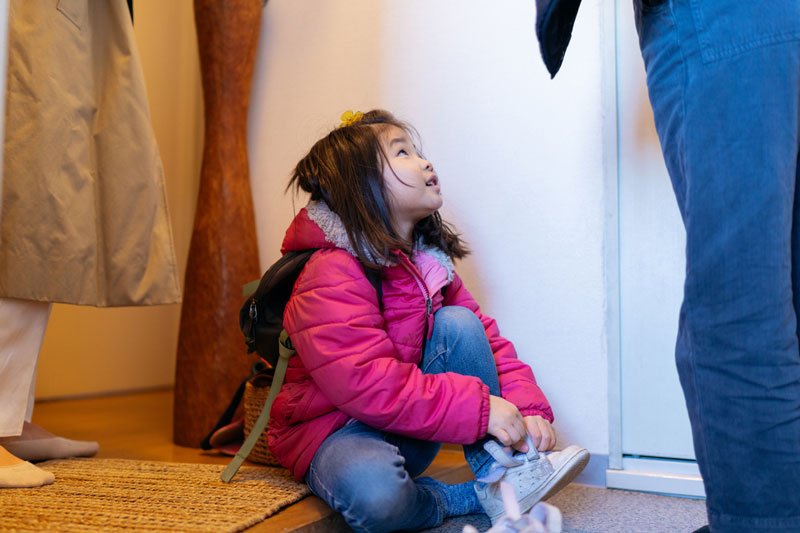
As adults, we’re used to being productive; doing things when we need to do them. Getting out the door with a child who doesn’t want to go when it’s time to leave the house, however, can be a real challenge. A child’s reluctance can really catch us off guard and can trigger all sorts of big feelings for us.
Fortunately, there are several things parents can do to help ensure a timely departure—and without tears for anyone involved.
Make it playful.
Although I often shy away from competition, this is the one time I’ll offer a race. Who can put on shoes the fastest and touch the doorknob? For some kids (particularly highly sensitive ones), however, competition causes anxiety, so use it with caution.
Would anyone like to hop to the door like a bunny? Roll across the rug to get there? Be carried and spun in circles? Sometimes a different mode of transportation is all kids need.
Give kids fair notice.
No one likes having to drop whatever they’re working on (in a child’s case, play is often their “work”) and move onto another event without warning. Suddenly preparing to leave the house can feel particularly jarring for kids. Whenever you can, give them time to wrap up what they’re doing, alerting them that when they’re done with that part of whatever-it-is, it’ll be time to go.
If you’re crunched for time and aren’t able to let them decide when they’re ready, tell them when it’ll be time to go. If they’re too young to understand the clock, put it in practical terms for them. Example: “After the amount of time it would take to watch one cartoon, we’ll put away your crayons together.”
Further, routines can make a huge difference. Sometimes, particularly for kids under seven, a visual chart that includes photos or drawings of each task that needs to happen before they leave the house can give them a sense of continuity. That way, it becomes less about “them versus you” and becomes about “What’s next on the chart?” This mentality helps foster partnership, and from there, greater likelihood of cooperation.
Work with your child’s strengths.
Is your child a morning person? See if you can schedule events for times he or she is likely to be happiest.
Does your kid do better if you have plenty of connection time, play, and snuggling before you move onto practical tasks? Build in time for those things before you plan to leave the house.
Is your child an introvert or an extrovert? As much as you can, tailor your activities and schedule for when and how your child is going to feel the most comfortable engaging with others.
These tips were adapted from this post about playful parenting.



























